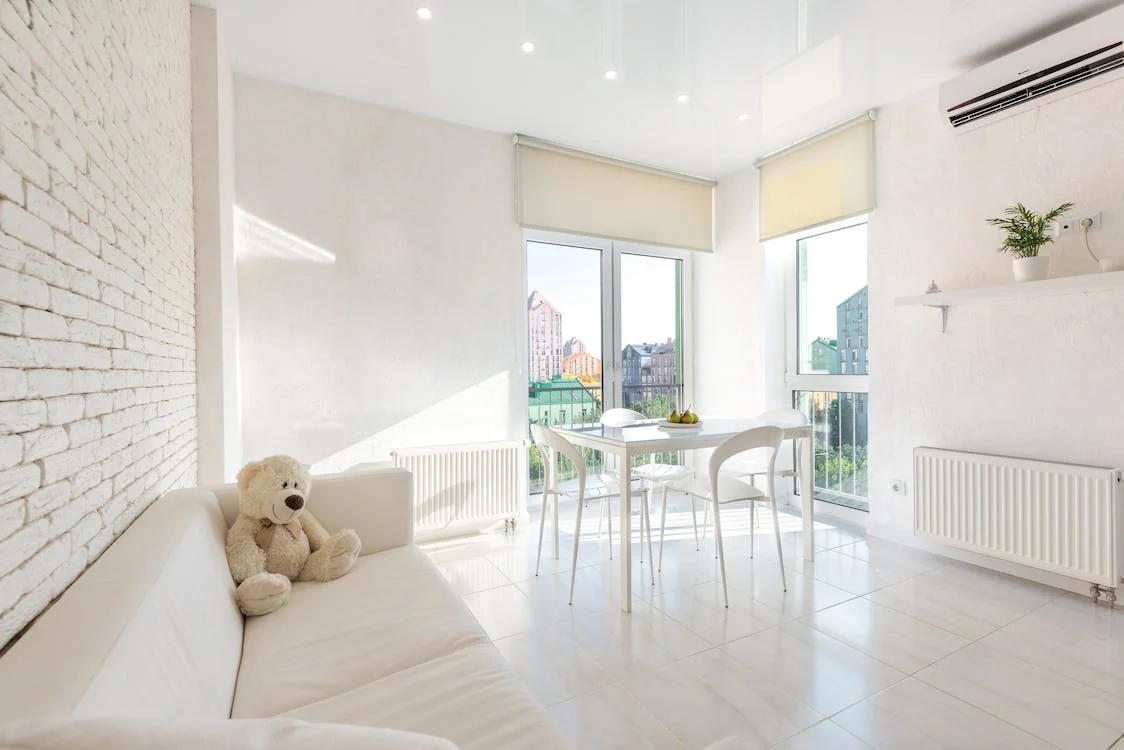What Are the Different Models of Door Blinds
Whether it’s a glass door, a door window or a bay window, installing a blind will allow, depending on your needs, to provide privacy in the room, to control the light or the temperature and, to top it all off, to add a personalized decorative touch. This post tells you how to combine the useful with the pleasant!
Door blinds: the different models

Roller blinds
A roller blind consists of a piece of fabric rolled up around a shaft. It is adjustable in height and allows perfect control of the light. The ideal model is chosen according to the intended use: simple decoration, need for privacy, darkness, protection against the sun, etc.
You can choose between these models:
Veil roller blind: made of transparent veiling, it lets the light through and gives the door an elegant look.
Day-night roller blinds: made up of alternating horizontal strips of blackout and transparency, they allow you to precisely control the intensity of the light, from bright to total darkness.
Screening roller blind: made of a semi-transparent fabric, it filters the light.
Blackout roller blind: made of opaque fabric, it completely blocks the light.
Screen roller blind: ideal for living rooms. When the door is exposed to the sun, it prevents glare.
Woven wood roller blind: this very decorative blind screens the light. Made of woven wood fibres, it is available in many natural colours.
Good to know: it is the simplest and most economical to implement. Simple and robust, its mechanism makes it suitable for regular use. Consisting of a single piece of fabric, it protects the privacy of a room and provides good protection against light.
Venetian blind
Venetian blinds allow you to filter the light at will, thanks to their tiltable slats.
Made of wood for a natural touch or aluminum for a more industrial style, the Venetian blind is a real decorative element.
A Venetian blind with narrow slats (25 mm) will suit a small door. A blind with wide slats (up to 50 mm) should be reserved for a bay window.
Good to know: although very decorative, it should be reserved for occasional use, as it is often cumbersome. Note that an aluminum Venetian blind is lighter than a wooden model.
California blind
The California blind is particularly functional and easy to install. It is easy to handle.
Its vertical bands are adjustable and allow a precise dosage of light.
The width of the door will determine the width of the strips of the blind and the intended use of the fabric that will compose it (blackout, sieve, anti-heat, etc.).
Good to know: it is best suited to sliding doors, thanks to its small footprint (right or left) on the side. It is well suited to large surfaces (in height and width).
Boat blind
The boat blind is the most suitable blind for a door.
A major decorative element and easy to maintain because it is machine washable.
Its principle is simple: it is a draped textile, adjustable in height thanks to a chain or a cord.
Ideal for dressing a door, this model of door blind is quickly assembled, economical and easily manipulated thanks to its cord (or its chain).
Pleated blind
Transparent, blackout or screen, a pleated blind, with its small size, dresses a door in all simplicity.
It is easy to install and allows you to control the light very easily, thanks to its integrated cord.
For all types of blinds designed to be used on a door, the “wall-mounted” installation is the most suitable.
Buying a door blind
The price of a door shade can vary greatly depending on its size, model and fabric. If you choose a roller blind or a boat blind, ordering online is a no-brainer. For a more sophisticated model, such as a Californian blind, it is better to go to a specialist. Professionals are there to help you take the correct measurements, guide you to the suitable model and explain the installation process.

